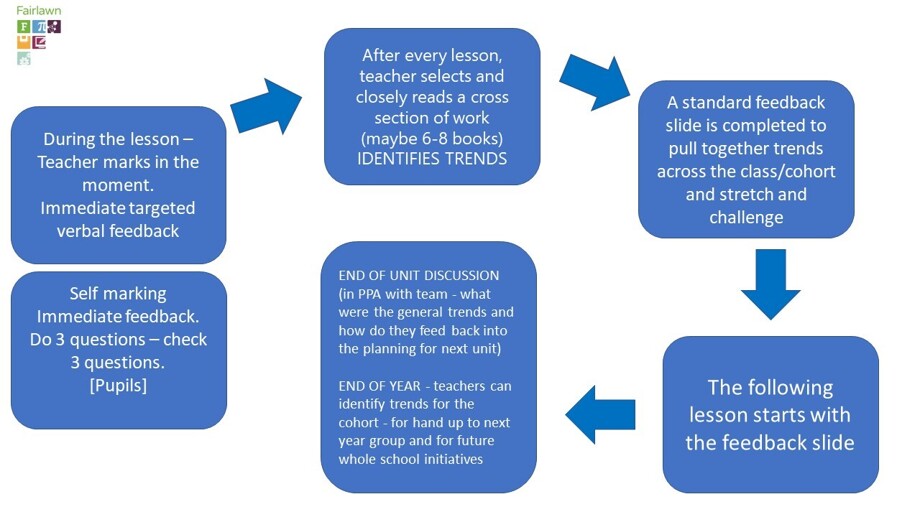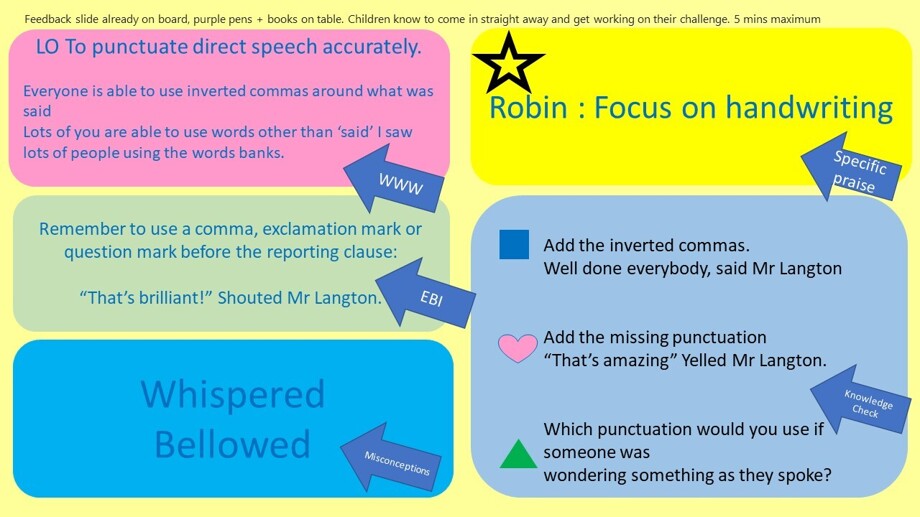Feedback
At Fairlawn, we recognise the imact that high quality feedback can have on pupil progress. When designing our marking and feedback procedure we wanted an approach that was evidence informed and most effective for pupil learning. We want feedback to be impactful and the best use of teacher's time.
Our intent is:
- To provide information about trends across classes, cohorts and the school.
- To provide targeted purposeful feedback not just ‘well done’.
- To inform planning and provision.
- To empower children with independence and responsibility.
- To foster greater investment of children in their own work resulting in pride.
- For teachers to spend fewer than 20 mins a day on 'marking’.
In maths we use self marking, pupils are trained to complete 3 calculations and then independently mark them using marking stations or calculators. Teachers are able to circulate and 'mark in the moment' providing specific targetted feedback and building a picture of strengths, areas for development and common misconceptions.
Our feedback procedure follows a cycle of reflection, identification of trends and immediate feedback to recognise strengths, challenge mistakes and misconceptions, recognise individual progress and complete a follow up activity to further embed learning.

- At the start of the following lesson, a standard feedback slide is delivered in the following sequence:
- Recap the learning objective
- Summarise success (What Went Well) against the learning objective
- Explain how work could be improved (Even Better If) and give pupils an opportunity to identify this in their work.
- Give pupils a chance to correct common misspelt words or challenge misconceptions.
- Recognise an individual pupil with specific praise.
- Pupils then self select from one of three differentiated retrieval practise activities to complete independently.

In years 1-5, at the end of a longer 'outcome' pieces of writing, teachers will closely mark all books against success criteria. In Year 6 this process of marking against success criteria is done through 'writing conferencing' where children assess their writing alongside a teacher or teaching assistant. This is due to end-of-KS2 writing moderation guidance.
